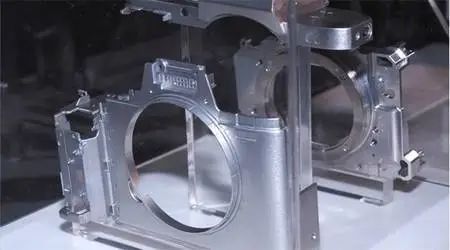
Eight technical standards for die casting molds(part 1)
2024-03-01 08:00
Die Casting, commonly referred to as "pressure casting," features high production efficiency, short production cycles, high surface finish and strength of castings, minimal machining allowances, and material savings. In recent years, China's die casting industry has seen rapid development, with a significant increase in total output, making it a bona fide die casting powerhouse. Molds, die casting machines, and die casting materials are the three key elements of die casting production. Only high-quality molds can reliably and efficiently produce high-quality castings.
The working environment of die casting molds is extremely harsh: during the die casting process, the mold cavities come into direct contact with high temperature, high pressure, high-speed molten metal, leading to wear, high-temperature oxidation, and various forms of corrosion. The efficient production process causes the mold temperature to undergo periodic drastic changes, leading to thermal fatigue cracks on the working surface. Friction between the metal and the mold cavity surface during forced metal deformation can wear down the mold and reduce its hardness.
Die casting molds incur high manufacturing costs, long production cycles, and difficulties in repair, making their service life particularly crucial. Therefore, research on factors affecting mold performance and service life is beneficial for improving casting quality and reducing economic losses due to premature mold failure. Generally, factors affecting die casting mold performance and service life include mold materials, mold design and manufacturing, surface treatment technology, and specific mold usage conditions.
Die casting molds are highly expensive specialized precision machinery, requiring mold maintenance workers to possess not only excellent technical skills and meticulous workmanship but also a conscientious and responsible attitude. Mold maintenance workers should be familiar with the following die casting mold technical standards:

1, Completely clean all metal residues and deposits from the mold to reveal its original appearance.
2, Carefully inspect the last die-cast product sent for repair, checking for issues such as scratches, sticking molds, crushing, meat dropping, minor core bending or breakage, misalignment of movable cores, changes in push rod length, misalignment of inserts, and loose fastening bolts. Based on the damage, determine whether repair or replacement is necessary.
3, Minor surface defects on the die-cast part, such as slight scratches, collapses, cracks, or drops, can be locally repaired by welding. Weld repairs should strictly follow the welding process to avoid significant loss of mold life. For more severe defects or mold damage on smaller parts, replacement may be necessary.
4, For severe defects such as significant surface collapses, cracks, or drops on larger molded parts, local welding repairs can be performed. Weld repairs should strictly follow the welding process to avoid significant loss of mold life. For smaller parts with more severe defects or mold damage, replacement may be necessary.
5, Sliding parts such as core pulling mechanisms and guiding devices should be thoroughly cleaned, inspected, and repaired. After lubricating with high-temperature grease, reassemble them.
6, If hydraulic core pulling is used, hydraulic components should be repaired simultaneously with the mold. Special attention should be paid to cleaning the hydraulic components to prevent contamination of the entire die casting machine hydraulic system.
7, When the mold fails or is damaged during production, the repair plan should be determined based on the specific circumstances. Comprehensive repairs may be necessary if required.
8, After completing maintenance, treat the molding surface, parting surface, and mounting surface with rust prevention, close the mold, place it on a pad according to the installation direction on the machine, and keep the mold accessories together.
Die Casting Mold Material
The performance and service life of die casting molds are closely related to the mold material. Good die casting mold manufacturing materials generally have the following characteristics: good machinability and forgeability; high wear resistance and corrosion resistance; high strength and red hardness at high temperatures; resistance to high-temperature oxidation, impact toughness, and tempering stability; good thermal conductivity and fatigue resistance; low thermal expansion coefficient; small thermal deformation rate after heat treatment, and good hardenability.
Die casting mold material selection should consider not only the temperature of the casting metal but also the impact and wear on various mold components by the casting metal. The higher the temperature, the higher the material's requirement for heat fatigue resistance and high-temperature performance. Components with severe wear should have higher hardness. As die casting mold working conditions become increasingly demanding, the requirements for mold material metallurgical quality, performance, and service life continue to increase. Especially, higher demands are placed on material purity and isotropy, leading to the emergence of high-alloy, high-quality, and optimized mold materials, which in turn promote the development of the die casting industry.
Get the latest price? We will reply as soon as possible (within 12 hours)
